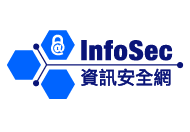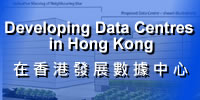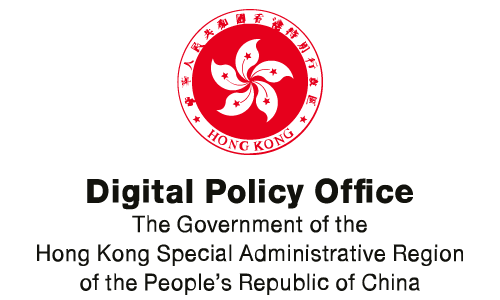
- |
- |
Technical Standards Relevant to Cloud Computing
Management | Web Services | Security | Data Communication & Format | Transport & Network
| Standard | Description | Standard Status |
|---|---|---|
| Cloud Application Management for Platforms (CAMP), developed by Organisation for the Advancement of Structured Information Standards (OASIS) | CAMP will leverage similarities between commercial and open-source PaaS products to produce a simple API that is language-, framework-, and platform-agnostic. Using CAMP, companies will be able to migrate their cloud applications from one PaaS vendor to another by mapping the requirements of applications to the specific capabilities of the underlying platform. | Cloud Application Management for Platforms Version 1.1 |
| Cloud computing framework for end to end resource management (ITU-T Y.3520), developed by International Telegraph Union -Telecommunication Standardization Sector (ITU-T) | Recommendation ITU-T Y.3520 presents general concepts of end-to-end resource management in cloud computing; a vision for adoption of cloud resource management in a telecommunication-rich environment; and multi-cloud, end-to-end resource management for cloud services, i.e., management of any hardware and software used in support of the delivery of cloud services. | ITU-T Y.3520 Recommendation |
| Cloud computing infrastructure requirements (ITU-T Y.3510), developed by International Telegraph Union -Telecommunication Standardization Sector (ITU-T) | Recommendation ITU-T Y.3510 provides requirements for cloud computing infrastructure; these include the essential capabilities for computing, storage and network resources, as well as the capabilities of resource abstraction and control. | ITU-T Y.3510 Recommendation |
| Cloud Data Management Interface (CDMI), developed by Storage Networking Industry Association (SNIA) | CDMI defines the functional interface that applications will use to create, retrieve, update and delete data elements from the Cloud. As part of this interface the client will be able to discover the capabilities of the cloud storage offering and use this interface to manage containers and the data that is placed in them. In addition, metadata can be set on containers and their contained data elements through this interface. | Cloud Data Management Interface, v1.1.1 (SNIA Technical Position, ISO/IEC 17826:2016) |
| Cloud Infrastructure Management Interface (CIMI), developed by Distributed Management Task Force (DMTF) | CIMI (ISO/IEC 19831:2015) describes the model and protocol for management interactions between a cloud Infrastructure as a Service (IaaS) Provider and the Consumers of an IaaS service. The basic resources of IaaS (machines, storage, and networks) are modeled with the goal of providing Consumer management access to an implementation of IaaS and facilitating portability between cloud implementations that support the specification. | Cloud Infrastructure Management Interface, v2.0.0, Cloud Infrastructure Management Interface, v1.1.0 (ISO/IEC 19831:2015) |
| IEEE P2301 — Guide for Cloud Portability and Interoperability Profiles (CPIP), developed by Institute of Electrical and Electronic Engineers Standards Association (IEEE-SA) | The purpose of this guide is to assist cloud computing vendors and users in developing, building, and using standards-based cloud computing products and services, which should lead to increased portability, commonality, and interoperability. | Active Project |
| IEEE P2302 — Standard for Intercloud Interoperability and Federation (SIIF), developed by Institute of Electrical and Electronic Engineers Standards Association (IEEE-SA) | This standard provides for a dynamic infrastructure that can support evolving business models amongst cloud providers to ensure interoperability between cloud services. | Active Project |
| ISO/IEC 17788 Cloud computing — Overview and Vocabulary, developed by International Organization for Standardization (ISO) | ISO/IEC 17788 provides an overview of Cloud Computing along with a set of terms and definitions. It is a terminology foundation for the cloud computing standardisation work. | ISO/IEC 17788:2014 (ISO Standard) |
| ISO/IEC 17789 Cloud Computing — Reference Architecture, developed by International Organization for Standardization (ISO) | ISO/IEC 17789 provides an overview of the general concepts and characteristics of Cloud Computing, Cloud Computing types, the components of Cloud Computing, and Cloud Computing actors and the relationships between these elements. | ISO/IEC 17789:2014 (ISO Standard) |
| ISO/IEC 19086 Cloud Computing — Service level agreement (SLA) framework and terminology, developed by International Organization for Standardization (ISO) | ISO/IEC 19086 provides an overview of SLAs for cloud services, identifies the relationship between the master service agreement and the SLA, addresses SLA concepts and requirements that can be used to build SLAs, and specifies terms and conditions as well as metrics commonly used in SLAs for cloud services. | ISO/IEC 19086-1:2016 (ISO Standard) |
| ISO 19770-1 IT Asset Management (SAM) — Processes, developed by International Organization for Standardization (ISO) | ISO/IEC 19770-1 specifies requirements for an IT asset management system within the context of the organization. It can be applied to all types of IT assets and by all types and sizes of organizations. | ISO/IEC 19770-1:2017 (ISO Standard) |
| ISO/IEC 19941 Cloud Computing -- Interoperability and Portability, developed by International Organization for Standardization (ISO) | ISO/IEC 19941 specifies cloud computing interoperability and portability types, the relationship and interactions between these two aspects, and common terminology and concepts used to discussing interoperability and portability and particularly relating to cloud services. | ISO/IEC 19941:2017 (ISO Standard) |
| ISO/IEC 19944 Cloud Computing -- Cloud Services and Devices: Data Flow, Data Categories and Data Use, developed by International Organization for Standardization (ISO) | ISO/IEC 19944 provides vocabulary and reference to describe and ecosystem involving devices using cloud services and, describes the various types of data flowing within the devices and cloud computing ecosystem. | ISO/IEC 19944:2017 (ISO Standard) |
| ISO 20000-1 Service management - Part 1: Service management system requirements, developed by International Organization for Standardization (ISO) | ISO/IEC 20000-1 includes the design, transition, delivery and improvement of services that fulfill service requirements and provide value for both the customer and the service provider. This part of ISO/IEC 20000 requires an integrated process approach when the service provider plans, establishes, implements, operates, monitors, review, maintains and improves a service management system (SMS). | ISO/IEC 20000-1:2011 (ISO Standard) |
| ISO 31000 Risk management - Principles and guidelines, developed by International Organization for Standardization (ISO) | The purpose of ISO 31000 is to provide principles and generic guidelines on risk management. ISO 31000 seeks to provide a universally recognised paradigm for practitioners and companies employing risk management processes to replace the myriad of existing standards, methodologies and paradigms that differed between industries, subject matters and regions. | ISO 31000:2009 (ISO Standard) |
| ISO 9001 Quality management systems — Requirements, developed by International Organization for Standardization (ISO) | ISO 9001 is the internationally recognised standard for the quality management of businesses. It applies to the processes that create and control the products and services an organisation supplies It prescribes systematic control of activities to ensure that the needs and expectations of customers are met It is designed and intended to apply to virtually any product or service, made by any process anywhere in the world. | ISO 9001:2015 (ISO Standard) |
| Job Submission Definition Language (JSDL) , developed by Open Grid Forum | JSDL defines an extensible XML schema relevant to computational data processing and job submission, including provisioning of input data and retrieval of results. The basic specification is often supplemented in actual use with specific profiles and extensions provided for by the standard. | JSDL v1.0 (OGF Full Recommendation / final standard) |
| Open Cloud Computing Interface (OCCI) , developed by Open Grid Forum | The Open Cloud Computing Interface is a RESTful boundary protocol and API that acts as a service front-end to a provider's internal management framework. OCCI describes APIs that enable cloud service providers to expose their services. It allows the deployment, monitoring and management of virtual workloads (like virtual machines), but is applicable to any interaction with a virtual cloud resource through defined http(s) header fields and extensions. OCCI endpoints can function either as service providers or service consumers, or both. | GFD.221: Open Cloud Computing Interface – Core GFD.222: OCCI Compute Resource Templates Profile GFD.223: Open Cloud Computing Interface – HTTP Protocol GFD.224: Open Cloud Computing Interface – Infrastructure GFD.226: Open Cloud Computing Interface – JSON Rendering GFD.227: Open Cloud Computing Interface – Platform GFD.228: Open Cloud Computing Interface – Service Level Agreements GFD.229: Open Cloud Computing Interface – Text Rendering |
| Server Management Command Line Protocol (SM CLP), developed by Distributed Management Task Force (DMTF) | DMTF's Systems Management Architecture for Server Hardware (SMASH) standard is a suite of specifications that deliver architectural semantics, industry standard protocols and profiles to unify the management of the data centre. The SMASH Server Management (SM) Command Line Protocol (CLP) specification enables simple and intuitive management of heterogeneous servers in the data centre. SMASH takes full advantage of the DMTF's Web Services for Management (WS-Management) specification - delivering standards-based Web services management for server environments. Both provide server management independent of machine state, operating system state, server system topology or access method, facilitating local and remote management of server hardware. SMASH also includes the SM Managed Element Addressing Specification, SM CLP-to-CIM Mapping Specification, SM CLP Discovery Specification, SM Profiles, as well as a SM CLP Architecture White Paper. | DSP0214 (DMTF Standard) ISO/IEC 13187:2011 (ISO Standard) |
| Service-oriented Cloud Computing Infrastructure (SOCCI) Framework, developed by The Open Group | Developed by The Open Group SOA and Cloud Work Groups, SOCCI is the realisation of an enabling framework of service-oriented components for infrastructure to be provided as a service in SOA solutions and the cloud. Using SOCCI, organisations can incorporate Cloud-based resources and services into their infrastructure for increased agility and scale, and lower maintenance costs. | Open Group SOCCI |
| Service Provisioning Markup Language (SPML) , developed by Organisation for the Advancement of Structured Information Standards (OASIS) | SPML is an XML-based framework for exchanging user, resource and service provisioning information between cooperating organisations. The goal of SPML is to allow organisations to securely and quickly set up user interfaces for Web services and applications, by letting enterprise platforms such as Web portals, application servers, and service centres generate provisioning requests within and across organisations. | SPML v2.0 (OASIS Standard) |
| Symptoms Automation Framework (SAF) , developed by Organisation for the Advancement of Structured Information Standards (OASIS) | The Symptoms Automation Framework (SAF) is architecture for enabling interoperable diagnosis and treatment of complex systems. The architecture is implementation agnostic yet it supports both stateful or real-time processing and postmortem diagnostics. | SAF v1.0 (OASIS Standard) |
| Topology and Orchestration Specification for Cloud Applications (TOSCA), developed by Organisation for the Advancement of Structured Information Standards (OASIS) | TOSCA will enable the interoperable description of application and infrastructure cloud services, the relationships between parts of the service, and the operational behavior of these services (e.g., deploy, patch, shutdown)--independent of the supplier creating the service, and any particular cloud provider or hosting technology. | TOSCA v1.0 (OASIS Standard) |
| Usage Record (UR) , developed by Open Grid Forum | The Usage Record standard establishes an XML format for exchange of accounting and service usage data in cloud and grid transactions. The format is intended for exchange of data across arbitrary systems at a level of granularity sufficient to merit reporting of computational time, network transactions, or storage. It is oriented toward use in contexts that can aggregate the usage results separately. | Usage Record (UR): GFD.98 (OGF Proposed Recommendation) |
| Web Services Agreement Negotiation Specification (WS-Agreement Negotiation) , developed by Open Grid Forum | Defines an offer/counter offer model for dynamic exchange of information between a negotiation initiator and responder. Rounds of negotiation are modeled as a rooted tree with defined states: Advisory, Solicited, Acceptable, and Rejected. Extends WS-Agreement, which provides the XML-formatted machine readable agreement format, to enable negotiation of parameters of existing agreements. | GFD.193: WS-Agreement Negotiation (OGF Proposed Recommendation) |
| Web Services Agreement Specification (WS-Agreement) , developed by Open Grid Forum | WS-Agreement standardises the terminology, concepts, overall structure and a set of port types and operations for creation, expiration and monitoring of agreements, including WSDL needed to express the message exchanges and resources needed to express the state. Both SOAP-based implementations using WSDL and REST-based implementations exist. Applicable to general machine-readable expression of service agreements, including Service Level Agreements (SLAs). | GFD.192: WS-Agreement (OGF Full Recommendation) |
The Government of the Hong Kong Special Administrative Region of the People's Republic of China






 Share
Share 









